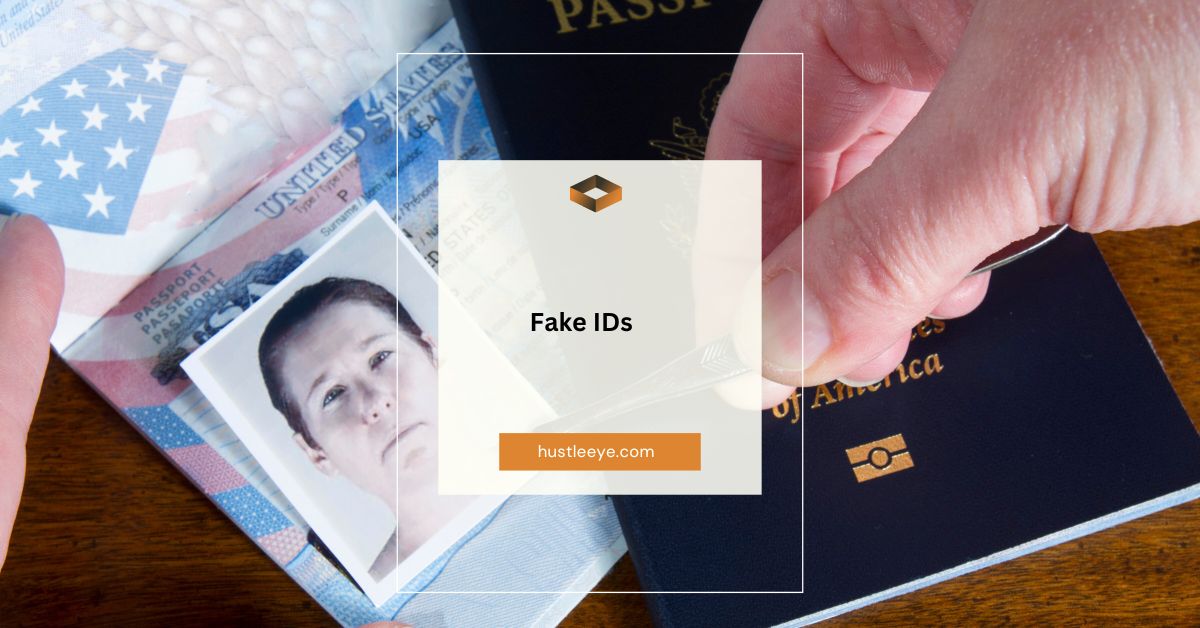In today’s digital age, the use of technology extends far beyond its intended purposes. While it facilitates progress and improves daily life, it also presents new challenges and opportunities for misuse. One alarming development is the rise of hyperrealistic fake IDs created with advanced technology, particularly artificial intelligence (AI).
This comprehensive guide will delve into the world of fake IDs, exploring how they are made, the dangers they pose, and how you can spot and prevent their misuse. Our aim is to provide valuable insights that go beyond existing information, helping you understand and address this growing issue effectively.
Table of Contents
Understanding Fake IDs:
Fake IDs are counterfeit identification documents that are created with the intention of deceiving others into believing they are legitimate. These IDs can range from driver’s licenses and state IDs to passports. While some individuals may seek fake IDs for relatively harmless purposes, such as gaining access to age-restricted venues, others use them for more nefarious reasons, including committing fraud and evading law enforcement.
1. Common Uses of Fake IDs:
- Underage Drinking: One of the most common reasons people seek fake IDs is to gain entry to bars and clubs before reaching the legal drinking age.
- Synthetic Identity Fraud: Criminals use fake IDs to create new, fraudulent identities by combining stolen and fictitious personal information.
- Credit Card Fraud: Fake IDs can be used to open credit accounts and make fraudulent transactions, leading to significant financial losses for businesses and individuals.
Read More: MLB66: Your Ultimate Guide to Free Major League Baseball Streaming
The Technology Behind Fake IDs:
1. Traditional Methods of Making Fake IDs:
Historically, creating fake IDs involved laborious processes such as manually editing photos and documents using graphic design software. Scammers had to replicate intricate details like holograms, watermarks, and specific fonts, which required significant skill and effort.
2. The Emergence of AI in Fake ID Production:
Recent advancements in AI have drastically transformed the process of creating fake IDs. Modern counterfeiters can now use AI technology to produce highly convincing fake IDs quickly and efficiently. AI tools and neural networks enable the generation of realistic images and documents with minimal human intervention.
Example: The OnlyFake Platform:
An underground service known as OnlyFake has demonstrated the capabilities of AI in fake ID production. For a relatively low cost, users can generate various types of fake IDs, including driver’s licenses and passports, by simply inputting personal information and uploading a photo. The platform claims to produce up to 20,000 fake IDs per day using advanced neural networks.
Read More: Hallie Gnatovich: An In-Depth Exploration of Her Life and Career
Why Fake IDs Are a Problem:
1. The Impact on Identity Security:
Fake IDs are not just a nuisance; they pose serious risks to personal and financial security. Fraudsters use fake IDs to commit identity theft, apply for loans and credit cards, and engage in other forms of financial fraud. The rise of AI-generated fake IDs makes these activities easier and more difficult to detect.
2. Consequences for Businesses and Institutions:
Businesses, especially those in the financial and online sectors, face increased risks due to the proliferation of fake IDs. Financial institutions, for example, report a significant number of fraudulent documents submitted in applications, leading to financial losses and reputational damage.
Read More: Mikki Mase Net Worth: A Deep Dive into the Mysterious Millionaire’s Fortune
How AI is Revolutionizing Fake ID Production:
1. AI Tools and Techniques:
AI tools are enhancing the quality and efficiency of fake ID production. With capabilities such as image generation, text manipulation, and data synthesis, AI can create fake IDs that are nearly indistinguishable from genuine ones. Some of the key techniques include:
- Generative Adversarial Networks (GANs): GANs can generate realistic images by learning from vast datasets of real ID photos.
- Neural Networks: These can produce high-quality ID documents by combining various design elements and personal information.
2. The Future of AI in Fake ID Creation:
As AI technology continues to advance, fake IDs will likely become even more sophisticated. This rapid evolution poses significant challenges for those tasked with identifying and preventing the use of counterfeit documents.
Real-World Impact of AI-Generated Fake IDs:
1. Case Study: OKX Cryptocurrency Exchange:
The 404 Media team successfully used a fake ID generated by OnlyFake to create an account on OKX, a cryptocurrency exchange. This experiment highlights the alarming quality of AI-generated fake IDs and the need for enhanced verification methods.
2. Widespread Availability of Fake IDs:
With numerous platforms offering AI-generated fake IDs, the problem is widespread. The low cost and high production volume of these fake IDs create an ongoing challenge for businesses and law enforcement agencies.
Read More: Natasha Fester Car Accident: A Comprehensive Overview
Identifying Fake IDs: What to Look For:
1. Common Indicators of Fake IDs:
Despite advances in technology, certain signs can help identify fake IDs. Look for:
- Distorted Holograms: Genuine IDs often feature holograms that are difficult to replicate accurately.
- Missing State Seals: Authentic IDs have state-specific seals that may be absent or poorly replicated on fake IDs.
- Inconsistent Text: Check for irregularities in fonts, spacing, and alignment.
2. Advanced Verification Techniques:
To enhance detection of fake IDs, businesses can implement several advanced verification techniques:
- Real-Time Photo Verification: Require users to take live photos of their ID documents during verification to prevent the use of static images.
- Liveness Detection: Incorporate tests that compare live photos of users with their ID images to ensure authenticity.
Read More: Understanding the Natasha Mae Fester Accident: A Comprehensive Analysis
Best Practices for Businesses to Combat Fake IDs:
1. Implementing Robust Identity Verification Systems:
Businesses should invest in comprehensive identity verification solutions to combat fake IDs effectively. Solutions like AuthenticID use advanced technology to detect fraudulent documents and ensure accurate identification.
2. Continuous Monitoring and Updates:
Regularly update verification processes and technologies to keep up with evolving counterfeit techniques. Continuous monitoring can help identify new threats and adjust strategies accordingly.
Read More: DD Osama Height: Discover How Tall the Rising Star Is!
FAQs About Fake IDs:
1. What is a fake ID?
A fake ID is a counterfeit identification document designed to deceive others into believing it is legitimate. Fake IDs can include driver’s licenses, state IDs, and passports.
2. Why are fake IDs a problem?
Fake IDs are used for various illegal activities, including underage drinking, identity theft, and financial fraud. They pose significant risks to personal security and business integrity.
3. How are AI-generated fake IDs made?
AI-generated fake IDs are created using advanced technologies such as generative adversarial networks (GANs) and neural networks. These tools can produce high-quality fake IDs quickly and efficiently.
4. How can businesses detect fake IDs?
Businesses can detect fake IDs by looking for indicators such as distorted holograms, missing state seals, and inconsistent text. Advanced verification techniques, such as real-time photo verification and liveness detection, can also help.
5. What should I do if I suspect an ID is fake?
If you suspect an ID is fake, compare it against a genuine ID for inconsistencies. Implement additional verification measures and consult with security experts if needed.
Conclusion:
Fake IDs represent a significant challenge in today’s digital world, exacerbated by the rapid advancement of AI technology. Understanding how fake IDs are made, the risks they pose, and how to identify them is crucial for individuals and businesses alike. By staying informed and implementing robust verification systems, we can better combat the misuse of counterfeit identification and protect our personal and financial security.
This comprehensive guide aims to provide valuable insights and practical advice to help you navigate the complexities of fake IDs and stay ahead of evolving threats.


